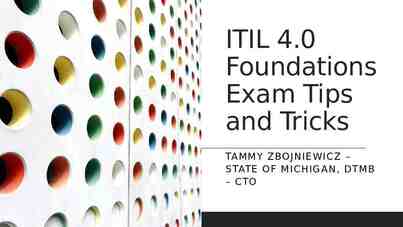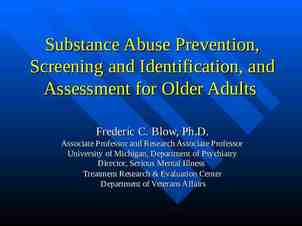No No Child Child Left Left Behind Behind and and Students
45 Slides666.00 KB

No No Child Child Left Left Behind Behind and and Students Students with with Disabilities Disabilities Presentation Presentation for for OSEP OSEP Staff Staff March March 20, 20, 2003 2003 Stephanie Lee Director, Office of Special Education Programs Office of Special Education and Rehabilitative Services U.S. Department of Education

Before the IDEA O S E P One in five children with disabilities was educated. More than 1 million children with disabilities were excluded from the education system. Another 3.5 million children with disabilities did not receive appropriate services.

Impact of the IDEA O S E P Today, 6.5 million children with disabilities are served. 96% of students with disabilities are now served in regular school buildings. The number of children birth to three receiving early intervention services has increased.

Impact of the IDEA (cont.) O S E P Increased Participation in Standardized Testing. High School Graduation Rates: Increased from 51.9% in 1994 to 57.4% in 1999. Increased College Enrollment: In 1978, under 3% of college freshman reported they had a disability, while in 1998, the figure was 9%.

Impact of the IDEA (cont.) O S E P Higher Employment Rates. The Special Education Teaching Force: More than doubled. Parent Involvement: More than 85% of parents are involved in planning their child’s services and making educational decisions.

Challenges O S E P High school graduation rates are insufficient. Post-secondary enrollment and completion rates are low compared with peers. Unemployment rates are high.

The IDEA Amendments of 1997 Focus on Accountability for Results O S E P State Performance Goals and Indicators Consistent with Goals and Standards for All Children. Access to, Participation in and Progress in the General Curriculum. Inclusion in State and District Assessments. Alternate Assessments.

The No Child Left Behind Act O S E P On January 8, 2002, President Bush signed into law the No Child Left Behind Act (NCLB) Most sweeping reform of the Elementary and Secondary Education Act since its enactment in 1965. Redefines the federal role in K-12 education.

The No Child Left Behind Act O S E P On January 8, 2002, President Bush signed into law the No Child Left Behind Act (NCLB) (cont’d) Requires accountability for all children, including student groups based on poverty, race and ethnicity, disability and limited English proficiency (LEP). Will help close the achievement gap between disadvantaged, disabled and minority students and their peers.

The No Child Left Behind Act O S E P Based on Four Principles: Stronger accountability for results. Increased flexibility and local control. Expanded options for parents. Focusing on what works.

The No Child Left Behind Act Stronger Accountability for Results O S E P States must implement statewide accountability systems covering all public schools and students based on: Challenging state standards in reading and math (science in 2005-2006). Annual testing for all students in grades 3-8 and at least once in grades 10-12. Annual statewide progress objectives ensuring that all groups of students reach proficiency within 12 years.

The No Child Left Behind Act Stronger Accountability for Results O S E P Assessment results and state progress objectives must be broken out (disaggregated) by poverty, race/ethnicity, disability and limited English proficiency.

The No Child Left Behind Act Stronger Accountability for Results O S E P Disaggregation of Data Statistically-Reliable Information Determined by states. Approved by Secretary. Protect Personally-Identifiable Information FERPA. Include Strategies in State Plan.

The No Child Left Behind Act Stronger Accountability for Results O S E P Disaggregation of Data If the number of students in a subgroup is not statistically reliable at the school level, the state must include those students in disaggregations at each level for which the number of students is statistically reliable – e.g., the LEA or state level.

The No Child Left Behind Act Stronger Accountability for Results O S E P Assessments must provide accommodations for students with disabilities as defined in the Individuals with Disabilities Education Act (IDEA). NCLB regulations require that assessments be accessible and valid with the widest possible range of students.

The No Child Left Behind Act Stronger Accountability for Results O S E P NCLB requires each state to develop gradelevel academic content and achievement standards that it expects all students, including students with disabilities, to meet.

The No Child Left Behind Act Stronger Accountability for Results O S E P Alternate Assessments IEP team determines if child cannot participate in all or part of the state assessments, even with accommodations. If a child cannot participate in the state assessments, even with accommodations, the state must provide for one or more alternate assessments for a child with a disability.

The No Child Left Behind Act Stronger Accountability for Results O S E P Alternate Assessments (cont’d) Alternate assessment must yield results for the grade in which the student is enrolled. NPRM issued by Secretary Paige.

The No Child Left Behind Act Stronger Accountability for Results O S E P State Responsibilities for Developing Challenging Academic Achievement Standards for Students with Disabilities Academic achievement standards for children with disabilities must be the same standards a state applies for all children except: Proposed regulations would allow states to use a documented and validated standards-setting process to define alternate academic achievement standards for students with the most significant cognitive disabilities.

The No Child Left Behind Act Stronger Accountability for Results O S E P State Responsibilities for Developing Challenging Academic Achievement Standards for Students with Disabilities (cont.) Alternate achievement standards must be aligned with the state’s academic content standards. Alternate achievement standards must reflect professional judgment of the highest learning standards possible for students with the most significant cognitive disabilities.

The No Child Left Behind Act Stronger Accountability for Results O S E P State Responsibilities for Developing Challenging Academic Achievement Standards for Students with Disabilities (cont.) The term “students with the most significant cognitive disabilities” means students who have been identified under IDEA and whose intellectual functioning and adaptive behavior are at or below three standard deviations below the mean.

The No Child Left Behind Act Stronger Accountability for Results O S E P Inclusion of All Students in Accountability System Except for students with the most significant cognitive disabilities for whom the state has established alternate achievement standards, alternate assessments must yield results for the grade in which the student is enrolled in at least reading/language arts, math, and beginning in the 07-08 school year, science. For students with the most significant cognitive disabilities, alternate assessments may yield results that measure the achievement of those students against the alternate achievement standards.

The No Child Left Behind Act Stronger Accountability for Results O S E P Inclusion of All Students in Accountability System (cont.) States and LEAs would be required to report separately on the percentage of students with disabilities taking alternate assessments measured against the alternate academic achievement standards and the percentage of students with disabilities taking alternate assessments measured against the general academic achievement standards for all children.

The No Child Left Behind Act Stronger Accountability for Results O S E P Adequate Yearly Progress (AYP) The proposed regulations specify the acceptable use of alternate achievement standards for students with the most significant cognitive disabilities for determining AYP. The proposed regulations would permit states to use alternate achievement standards for students with the most significant cognitive disabilities in calculating AYP for schools, LEAs and the state, provided that: The percentage of students with the most significant cognitive disabilities at the LEA and state levels, separately, does not exceed 1.0 percent of all students in the grades assessed.

The No Child Left Behind Act Stronger Accountability for Results O S E P Adequate Yearly Progress (AYP) (cont.) The proposed regulations allow states to request from the Secretary an exemption to the l.0 percent limitation, and for LEAs to request an exemption from the state, if they can document that the incidence of students with the most significant cognitive disabilities in the LEA or state exceeds the 1.0 percent limitation and that circumstances exist that could explain the higher percentages such as a school, community, or health program that draws such children, or small overall populations.

The No Child Left Behind Act Stronger Accountability for Results O S E P Adequate Yearly Progress (AYP) (cont.) In calculating AYP for each state and each LEA, the state must apply grade-level academic content and achievement standards to assessment results of any students taking alternate assessments that exceed the 1.0 percent limitation (or the increased percentage exemption described above).

The No Child Left Behind Act Stronger Accountability for Results O S E P School districts and schools that fail to make adequate yearly progress (AYP) toward statewide proficiency goals will, over time, be subject to improvement, corrective action and restructuring measures. Improvement measures include – among others: Technical Assistance. Public School Choice. Supplemental Educational Services.

The No Child Left Behind Act Stronger Accountability for Results O S E P Technical Assistance States and school districts must provide technical assistance to schools identified for school improvement, corrective action or restructuring.

The No Child Left Behind Act Expanded Options for Parents O S E P Public School Choice Parents with children in schools that fail to meet state standards for at least two consecutive years may transfer their children to a better performing public school, including a public charter school, within their district.

The No Child Left Behind Act Expanded Options for Parents O S E P Public School Choice and Students with Disabilities Public school choice option must provide FAPE. Change in the location of delivery of services does not equate to change of placement under IDEA. School choice options do not have to be same choices for nondisabled students.

The No Child Left Behind Act Expanded Options for Parents O S E P Supplemental Educational Services Students from low-income families in schools that fail to meet state standards for at least three years are eligible to receive supplemental educational services – including tutoring, after-school services and summer school.

The No Child Left Behind Act Expanded Options for Parents O S E P Supplemental Services for Students with Disabilities Must be consistent with the student’s IEP. Are not considered a part of the IEP. Parental consent required before developing the supplemental services agreement. Some providers must be able to serve students with disabilities.

The No Child Left Behind Act Stronger Accountability for Results O S E P Schools that meet or exceed AYP will be eligible for State Academic Achievement Awards.

The No Child Left Behind Act Stronger Accountability for Results O S E P State and School District Report Cards Student academic achievement on statewide tests disaggregated by subgroup. Comparison of students at basic, proficient and advanced levels of achievement. High school graduation rates (drop outs).

The No Child Left Behind Act Stronger Accountability for Results O S E P State and School District Report Cards (cont.) Number and names of schools identified. Professional qualifications of teachers. Percentage of students not tested.

The No Child Left Behind Act Focusing on What Works O S E P Reading First Program Research-based reading instruction in grades K-3 to children who: Have reading difficulties. Are at-risk of referral to special education based on reading difficulties. Have been evaluated but not identified under IDEA. Are served under IDEA based on severe learning disability related to reading. Are deficient in essential components or reading skills. Are limited English proficient.

The No Child Left Behind Act Focusing on What Works O S E P Reading First Program (K-3) 900 million in 2002. 6-year formula grants to states. Competitive grants to LEAs to: Administer screening and diagnostic tests. Provide professional development.

The No Child Left Behind Act Focusing on What Works O S E P Emphasis on Teacher Quality Train teachers to teach and address needs of students with different learning styles, particularly students with disabilities or with LEP. Coordinate professional development activities under other federal, state and local programs. Train early childhood educators to meet educational needs of child, including children with disabilities or with LEP.

The No Child Left Behind Act Focusing on What Works O S E P Improving Teacher Quality State Grants Program ( 2.85 Billion in 2002) Using scientifically based practices to prepare, train and recruit high-quality teachers. Core academic subjects taught by high qualified teachers by 2006 school year. Must demonstrate annual progress toward goal.

The No Child Left Behind Act Focusing on What Works O S E P Highly Qualified Teachers and Special Education Special education teachers teaching core academic subjects must meet “highly qualified” requirements. All special education personnel must meet IDEA personnel-standards requirements. States have flexibility in how standards are met.

The No Child Left Behind Act Focusing on What Works O S E P Higher Qualifications for Paraprofessionals Paraprofessionals hired after 1/8/2002 to work in Title I funded programs must have: Completed 2 years of study at an IHE. Obtained associate’s or higher degree, OR Met rigorous standard of quality. Demonstrated ability to instruct in reading, writing and mathematics (through state or local academic assessment). Paraprofessionals hired before 1/8/2002 to work in Title I funded programs must meet requirements in 4 years.

The No Child Left Behind Act Focusing on What Works O S E P Paraprofessionals and Special Education If a person working with special education students does not provide any instructional support (such as a person who solely provides personal care services), the person is not considered a paraprofessional under Title I.

The No Child Left Behind Act O S E P For Additional Information on NCLB: www.ed.gov/offices/OESE/asst.html

IDEA Reauthorization O S E P Opportunities Provided by NCLB. Build on NCLB Framework.

Principles for Reauthorizing the IDEA O S E P Stronger Accountability for Results. Simplify Paperwork for States and Communities and Increase Flexibility for All. Doing What Works. Increase Choices and Meaningful Involvement for Parents.






